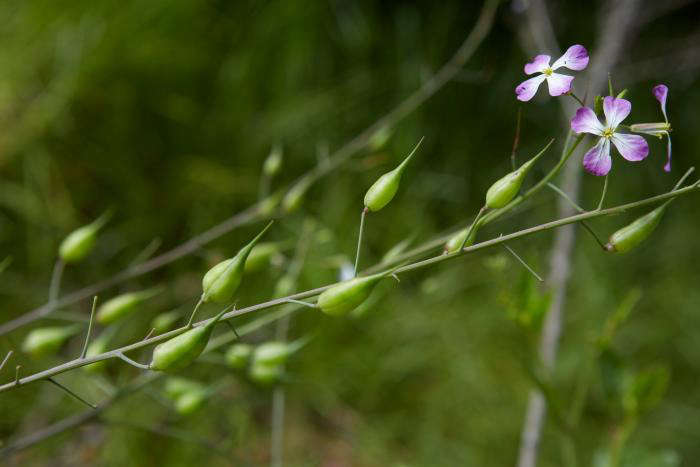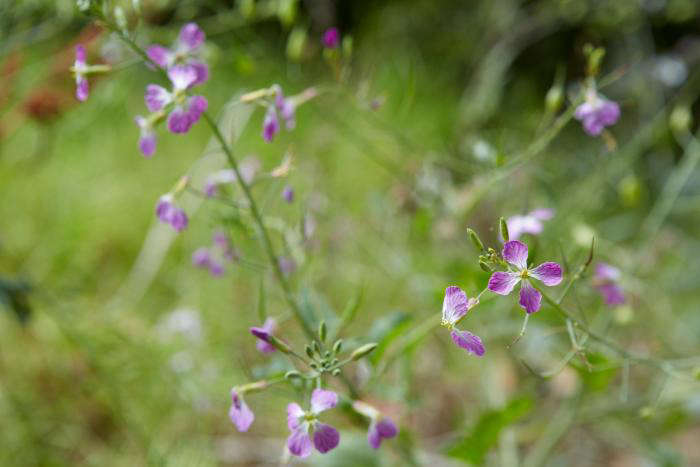If you’ve noted clusters of lavender and yellow wildflowers blooming in sunny fields, you might be looking at the delicious wild radish.
In late summer and early autumn, foragers seek wild radishes for their spicy seed pods, which taste great fresh, pickled, or sautéed. Their edible flowers also add a spicy kick on salads and in the springtime, their leaves are great steamed.
Photographs by Marla Aufmuth for Gardenista.

Above: Wild radishes are easy to find in Northern California, but make sure you are foraging in an area that doesn’t have any industrial run-off nearby–and if it’s private property, be sure to ask permission. For a roundup of quality scissors, visit Gardenista’s post Japanese Garden Scissors.

Above: The seed pods of the wild radish are peppery and crunchy, sort of like the roots of their relative, the domestic radish.

Above: One of the rules of ethical foraging is to never harvest more than one third of what is available. Leave seeds so the plants can reproduce.

Above: A popular way to prepare radish pods is to pickle them. For this recipe, you’ll need about 2.5 cups of wild radish pods. As well, you’ll need two dried red chili peppers, six black peppercorns, one tablespoon of sea salt, six tablespoons of sugar, a half teaspoon of yellow mustard seeds, three quarters of a cup of hot water and one half cup of cider vinegar.

Above: Combine water, vinegar, salt, and sugar in a canning jar and shake until everything has dissolved. In a different jar, pack the washed wild radish pods. Add the spices, and pour the water-vinegar mix over the pods. Let them sit for about two weeks before eating. For more canning tips, see 10 Easy Pieces: Canning Essentials.

Above: Add pickled wild radish pods and their flowers to salads for nice texture, color, and plenty of peppery flavor.
N.B.: This is an update of a post originally published October 2, 2012.












Have a Question or Comment About This Post?
Join the conversation (4)